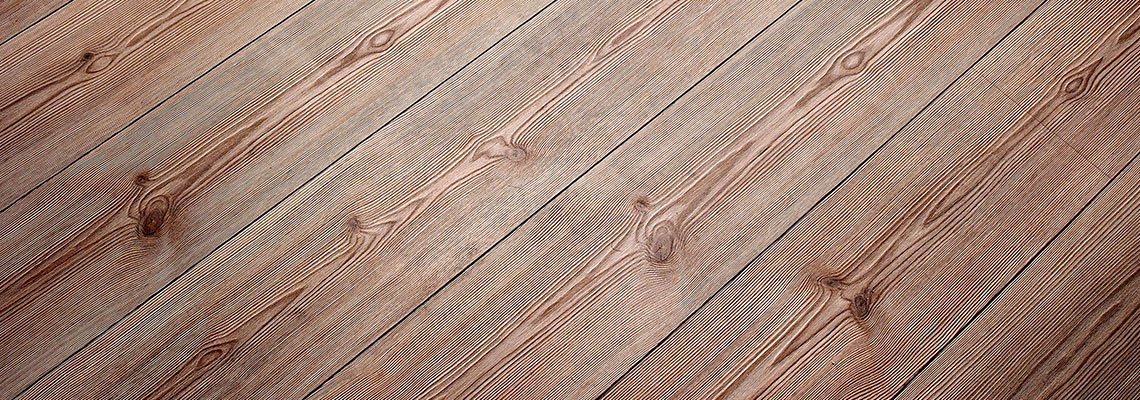
-
20 March, 2025
-
Sanding UK
In Part 1 of our guide to wood flooring surfaces, we explored popular finishes like brushed and hand-scraped wood – timeless effects that bring out the natural beauty of timber. But the world of wood floor textures doesn’t stop there. In this second part, we’ll dive deeper into some of the more modern and creative surface treatments that are gaining popularity for their unique aesthetic appeal. From bold staining options to vintage-inspired distressed looks, discover how these finishing techniques can transform your floors into a standout design element in your space.
Stained Wood Flooring
Wood floor staining is a popular method for customising the colour of your wooden surfaces, offering a way to express your personal style or align your flooring with your interior design theme. Unlike clear finishes that simply enhance the wood’s natural tones, stains add rich, vibrant or subtle hues that dramatically change the look of your floors.
With today’s market offering nearly every colour under the sun—from natural oak shades to deep charcoals and even bright contemporary tones—there’s plenty of room to get creative. This makes staining an excellent choice for homeowners and designers seeking a truly personalised floor.
However, bold choices come with a word of caution: stains are difficult to reverse. Once applied, especially darker or unconventional shades, changing or removing them can be laborious and may require complete resanding. To avoid regret, it’s highly recommended to test your chosen colour on a small, hidden area of the floor before committing to the entire space.
Smoked Wood Flooring
Smoked wood flooring, also known as fumed flooring, is a luxurious and dramatic option for those seeking depth and variation in tone. This effect is achieved by exposing the wood to an environment rich in ammonia. The ammonia reacts with the natural tannins in the wood, drawing them to the surface and darkening the colour significantly.
The result is a rich, earthy palette that ranges from warm browns to deep, almost black shades. What makes smoked flooring particularly attractive is the natural-looking gradation and tone variation between boards, giving your floor a distinctive and high-end appearance.
Smoked wood floors are a favourite in modern interior design and work beautifully in spaces that favour a monochromatic, industrial, or high-contrast aesthetic. This surface treatment not only enhances the natural beauty of the wood but also adds a level of sophistication and uniqueness that is hard to replicate with stains or paints.
Painted Wood Flooring
Painted wood floors offer a bold and creative way to transform the look of any space. By applying one or two coats of paint directly onto the surface, you can achieve a dramatic change in appearance, whether you are aiming for a crisp white finish, a trendy grey tone, or a vibrant colour that makes a statement.
One of the biggest advantages of painted floors is how quick and easy the transformation can be. It is an ideal option for updating older floors or achieving a specific design style—such as shabby chic, coastal, or modern farmhouse—without a major renovation.
However, keep in mind that paint is permanent and difficult to remove once applied. Changing your mind later could require sanding down the surface entirely, which adds extra time and cost. That’s why it’s important to choose a colour you’ll be happy with long term.
Painted floors work best in low-traffic areas or where you want to add a distinctive decorative touch. As always, consult a flooring professional to ensure the right products and techniques are used for optimal adhesion and durability.
Comparison Table: Advanced Wood Floor Surface Effects
| Surface Effect | Key Feature | Best For | Considerations |
|---|---|---|---|
| Stained | Offers a wide range of colour options | Custom and bold interior styles | Colour is hard to reverse once applied |
| Smoked | Darkens the wood naturally via ammonia exposure | Modern, sleek and monochrome spaces | Not suitable for all wood types |
| Painted | Provides a strong visual makeover | Decorative, low-traffic spaces | Permanent and can be hard to remove |
Frequently Asked Questions
Here are some common questions homeowners have when considering unique wood floor surface effects:
Can stained wood flooring be refinished later?
Yes, but it may require sanding to remove the stain completely. Always consult a professional to understand your specific floor type and finish.
Is painted wood flooring durable enough for high-traffic areas?
Painted wood floors can be durable, especially with a proper topcoat. However, they’re better suited for low to moderate traffic areas to avoid frequent touch-ups.
Does smoked wood flooring fade over time?
Smoked wood can darken or change slightly with prolonged UV exposure. To maintain its appearance, use window coverings or UV-protective finishes.
Can I apply these effects to engineered wood?
Some effects like staining and painting can be applied to engineered wood with a thick enough top layer. However, distressing and smoking are usually better suited for solid hardwood.
Conclusion & Call to Action
Exploring different surface effects like staining, painting, or smoking gives you the freedom to personalise your wood floors to match your exact style. These finishing techniques can elevate even the simplest wooden planks into a statement piece of your home decor.
Whether you are going for a bold stained tone, the rich depth of smoked boards, or the creative flair of painted floors, make sure to work with trusted professionals for the best outcome. And always test colours and finishes before committing to an entire space.
Need help selecting or maintaining your perfect floor? Explore our wood floor restoration services or contact our team today for expert advice tailored to your project!
